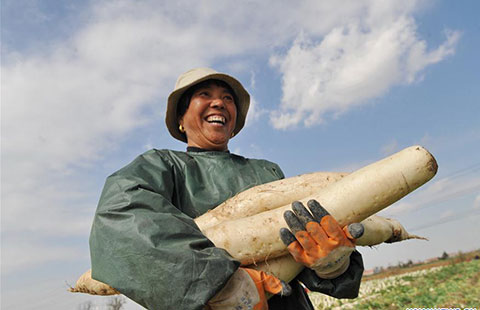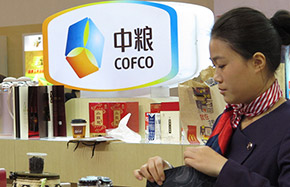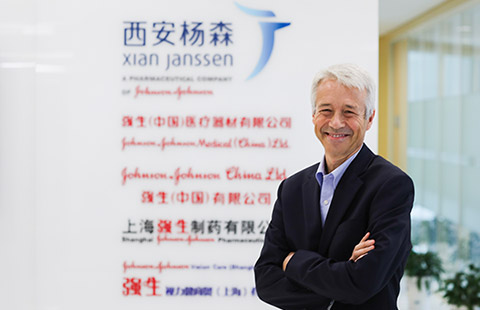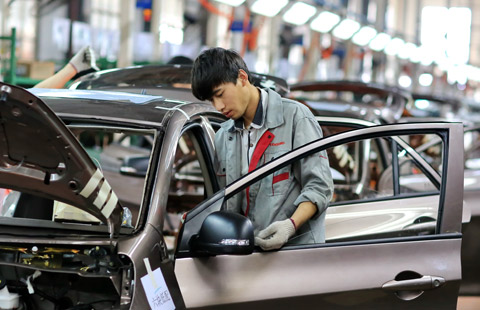Doors open wider: China's promise becoming reality
BEIJING -- US electric automaker Tesla Inc has been in the media spotlight in the past few weeks for something still uncertain: whether, and when, it will build its first car factory in China.
Tesla CEO Elon Musk spoke of a "rough target of start of production in about three years" on the company's plan for a China plant in a conference call with analysts last week, following reports of it having talks with the local government on building a factory in Shanghai.
Nothing is final yet, but one thing is certain: however Tesla's plan turns out, China is unlikely to slow down its drive to open wider to foreign investors.
"We always welcome foreign investment, especially in high-tech, energy-saving and environmental protection as well as strategic emerging industries," Ministry of Commerce spokesperson Gao Feng said when commenting on Tesla's progress.
A report to the 19th National Congress of the Communist Party of China held last month made clear that "China will not close its door to the world, and it will only become more and more open."
Those words are gradually being turned into actions.
The government has confirmed that a plan is being forged to build a free trade port in Shanghai.
The first China International Import Expo has been slated for Nov 5-10, 2018, in Shanghai, a move expected to help more foreign goods enter the Chinese market.
Next year, a negative list approach to market entry, which states sectors and businesses that are off limits to foreign investment, will be expanded nationwide.
The Shanghai free trade port, for one thing, will "become a new landmark for China's opening up," said Zhang Yugui, a professor of economics at Shanghai International Studies University.
He expects the free trade port to lead to prosperity in offshore finance and offshore trade, and embed China into the global high-end value chain.
To emulate other successful forerunners in the world, the Shanghai free trade port should "have little restrictions on the category, prices and quantities of goods imported and exported," said Yin Chen, a researcher of free trade zones at Fudan University.
He also listed unrestricted flow of capital, zero tariffs on most goods traded and free market entry to most industries by foreign investment.
China is already the world's top exporter and second largest importer. It is expected to import goods worth $8 trillion and attract $600 billion of foreign investment in the next five years, Chinese leaders have said.
The upcoming import expo, which will gather companies from more than 100 countries and regions, will help foreign manufacturers grab a bigger slice of China's booming consumption market.
"The decision to hold this expo shows China's sincere wish to open up its market and its sense of responsibility as a big country to push for economic globalization," Vice Minister of Commerce Fu Ziying told a press conference last week.
Foreign firms are taking the opportunity of an opener Chinese economy. SAIC-GM, a joint venture between China's SAIC Motor and General Motors of the United States, said it has continued exploring and achieved fast growth in new businesses in addition to auto manufacturing, including auto finance and financial leasing in the country.
"Many of these involve cross-sector business development and cannot do without an open, fair market environment," said Julian Blissett, executive vice president of SAIC-GM. "It is based on the judgment that our environment keeps improving that we show full confidence in the following market exploration."
Paul Rawlinson, global chair of international law firm Baker McKenzie, noticed marked progress in the opening up of China's capital market. While the process still needs to evolve, he said, "the growth trajectory is impressive already."
Recent years have seen the launch of stock trading links between the mainland and Hong Kong as well as a Shanghai-Hong Kong bond connect program to give foreign investors greater access to the capital market.
There is more to do, especially in opening the service sector, which means more tax preferences and lower market thresholds for foreign-provided services, said Bai Ming, a researcher with the Chinese Academy of International Trade and Economic Cooperation.
"China is catching up and going ahead, even taking the lead in some respects, while some previous forerunners now seem to be walking backwards [in opening up their economies]," Bai said.
Protectionism, especially in trade, remains a threat to the global economic recovery. In the period between mid-October 2016 and mid-May 2017, the Group of 20 economies applied 42 new trade-restrictive measures, an average of six measures per month, according to the World Trade Organization.
"China stands firm in pushing for economic globalization, but it can hardly do so on its own," Bai said.
























